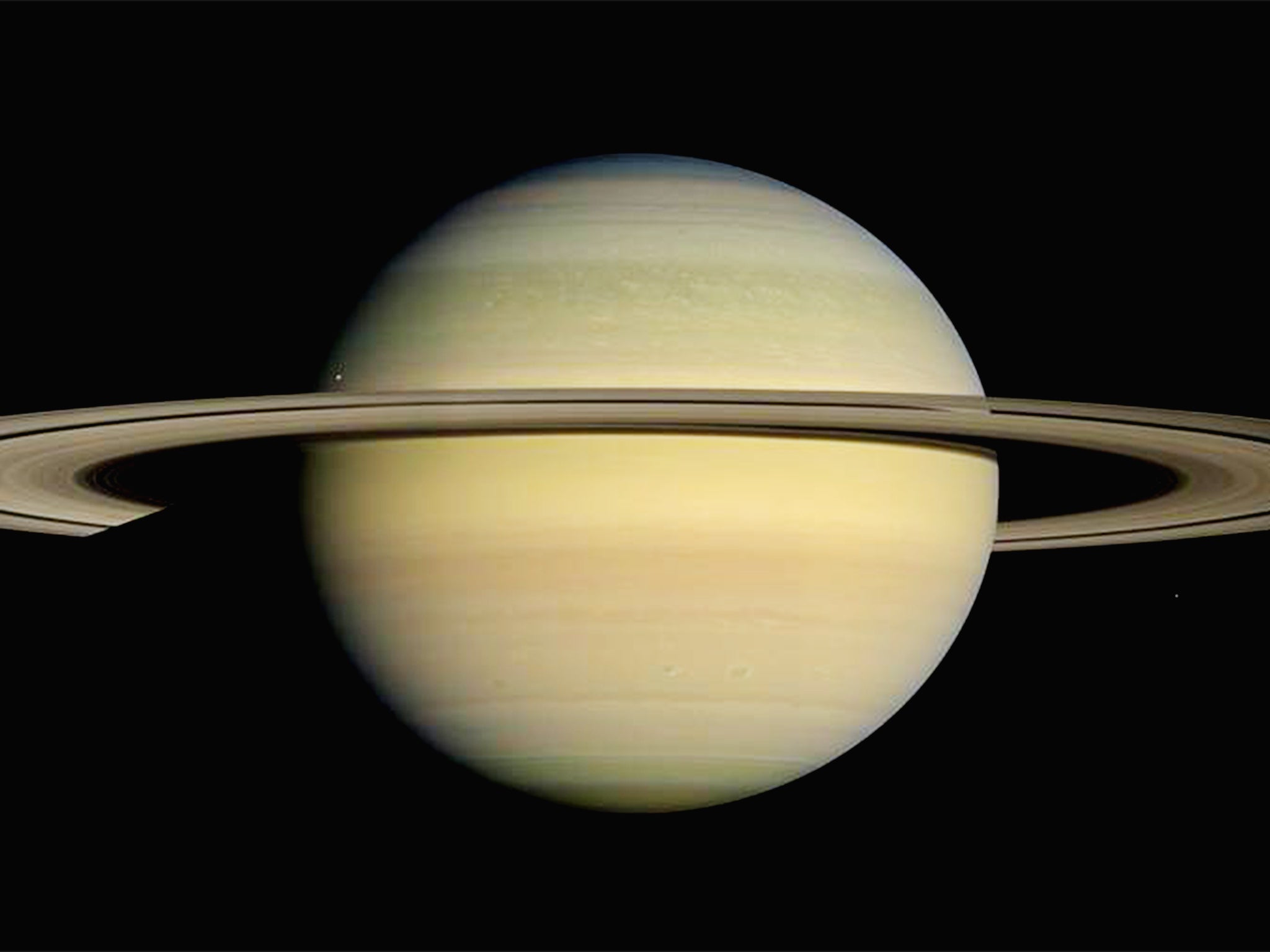Saturn's rings are relatively new, Nasa spacecraft finds after plunging into planet
'The first time I looked at the data I didn't believe it'

Your support helps us to tell the story
From reproductive rights to climate change to Big Tech, The Independent is on the ground when the story is developing. Whether it's investigating the financials of Elon Musk's pro-Trump PAC or producing our latest documentary, 'The A Word', which shines a light on the American women fighting for reproductive rights, we know how important it is to parse out the facts from the messaging.
At such a critical moment in US history, we need reporters on the ground. Your donation allows us to keep sending journalists to speak to both sides of the story.
The Independent is trusted by Americans across the entire political spectrum. And unlike many other quality news outlets, we choose not to lock Americans out of our reporting and analysis with paywalls. We believe quality journalism should be available to everyone, paid for by those who can afford it.
Your support makes all the difference.Saturn's rings are relatively new, a Nasa spacecraft has found after plunging into the planet.
The world once exised without those famous rings and acquired them perhaps as recently as 10 million years ago, data from the Cassini spacecraft has shown.
The new study finally answers the question of how old the rings are as well as what they might have been made of. Scientists were able to weigh the rings by measuring their gravitational pull.
Just before Nasa's Cassini spacecraft fell into Saturn and destroyed itself, it flew between the rings and the planet itself, allowing scientists to watch how they tugged it around during the flight. That meant the spacecraft could act as a gravity probe, measuring how much pull the rings themselves had.
The researchers found that estimate – which showed they had about 40 per cent of the pull of Saturn's moon Mimas, itself about 2,000 times smaller than our own Moon – shows the rings are relatively new. They must have originated less than 100 million years ago and might be only 10 million years old, the data showed.
That finally answers a long argument among planetary scientists. Some argued the rings must have arrived alongside the planet, some 4.5 billion years, formed out of ice that was left behind when the solar system came together – others argued that they were much newer and came about when an object was destroyed and became rubble that orbited around the planet.
Researchers found themselves initially shocked by the data they received back from Cassini and what it seemed to suggest about the ring's gravity. But they then accounted for the fact Saturn has deep flowing winds and the measurements started to make sense.
"The first time I looked at the data I didn't believe it, because I trusted our models and it took a while to sink in that there was some effect that changed the gravity field that we had not considered," said Burkhard Militzer, a professor of earth and planetary science at the University of California, Berkeley, who models planetary interiors. "That turned out to be massive flows in the atmosphere at least 9,000 kilometers deep around the equatorial region. We thought preliminarily that these clouds were like clouds on Earth, which are confined to a thin layer and contain almost no mass. But on Saturn they are really massive."
It is still not clear how the vast rings managed to form so recently, according to the study's authors. But the researchers say that the surprising discovery of the ring's youth is a "fitting way to end Cassini's mission", and marks one of a range of surprising discoveries about the planet and the rings that surround it.
Join our commenting forum
Join thought-provoking conversations, follow other Independent readers and see their replies
Comments